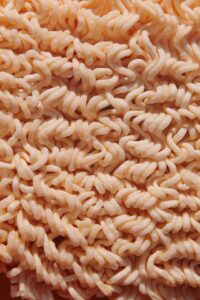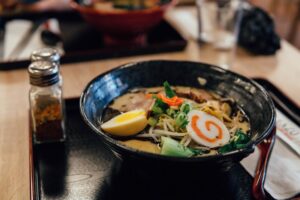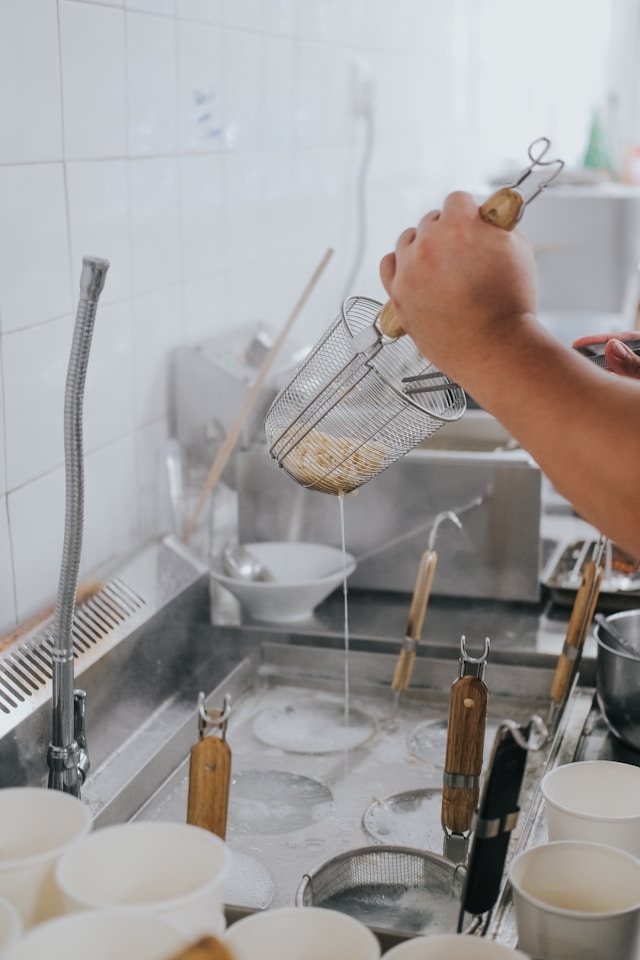For many visitors to Japan, the sound of slurping noodles, such as ramen or soba, might come as a surprise. However, this distinctive way of eating has deep cultural roots and practical advantages. In this article, we’ll explore the origins, cultural significance, and even the scientific merits of slurping noodles in Japan. By the end, you’ll understand why this practice is more than just a habit—it’s an essential part of the Japanese dining experience.
The Unique Japanese Perspective on Eating Sounds
The Relationship Between Food and Sound in Japanese Culture
In Japan, making noise while eating certain foods, especially noodles, is not only acceptable but sometimes seen as proper. This contrasts with Western etiquette, where eating quietly is often emphasized. Slurping noodles loudly is often considered a way of expressing enjoyment and appreciation of the meal.
The emphasis on fully engaging the senses—taste, smell, sight, and even sound—is a hallmark of Japanese food culture. The sound of slurping is part of this multi-sensory approach to dining, contributing to a richer overall experience.
Historical Roots in Traditional Eating Styles
The practice of slurping noodles can be traced back to the Edo period (1603–1868). During that time, soba noodle shops catered to busy urbanites who wanted quick and satisfying meals. Eating quickly and efficiently became a practical norm, and slurping became ingrained in the culture. Over time, this method of eating came to symbolize enjoying noodles to their fullest, balancing tradition with practicality.

The Scientific Benefits of Slurping Noodles
Enhancing the Aroma and Flavor
Slurping noodles isn’t just a cultural quirk—it has a scientific basis. When you slurp, the action brings more air into your mouth, which intensifies the aroma of the broth or sauce. As smell plays a critical role in taste perception, this process allows you to enjoy the dish’s flavors more fully.
For hot noodle dishes like ramen or soba, the combination of aromas released from the broth and the noodles as you slurp creates a heightened sensory experience that’s hard to achieve otherwise.
Cooling Hot Noodles While Eating
Another practical advantage of slurping is its cooling effect. As you draw noodles into your mouth, the intake of air simultaneously reduces their temperature. This makes it easier to enjoy hot noodles without burning your tongue, enabling you to eat more comfortably.

The Cultural Etiquette of Slurping
A Way to Express Enjoyment and Gratitude
In Japan, slurping noodles can also be a way to show appreciation for the meal. It’s often interpreted as a sign of enjoyment, signaling to the chef or host that the food is delicious. This adds an extra layer of interaction between the diner and the person who prepared the meal, fostering a sense of connection.
Regional and Household Differences
While slurping is widely accepted, it’s not universal across all regions or households in Japan. Some families or areas may prefer quieter dining. However, in noodle-focused restaurants like ramen shops, slurping is almost always considered acceptable, if not expected.
The Global Perspective on Slurping Noodles
The Influence of Japanese Ramen Culture Abroad
As Japanese ramen and soba have gained popularity worldwide, slurping has also drawn attention. During Japan’s ramen boom in the late 20th century, slurping sounds became closely associated with enjoying the dish. This has since been reinforced in global media, from food shows to advertisements, where the slurping sound is often featured as a symbol of authenticity.
Now, in ramen shops across the United States and Europe, some establishments even encourage slurping to create a more immersive dining experience. This unique aspect of Japanese dining has become a point of fascination and fun for many foreign food enthusiasts.
Slurping as an International Curiosity
The act of slurping often surprises first-time visitors to Japan. In many cultures, making noise while eating is considered impolite, so encountering this practice can be a cultural shock. However, it’s increasingly embraced as an authentic part of Japanese food culture. Videos of Japanese people eating noodles, complete with the accompanying sounds, often go viral on social media, highlighting the global curiosity about this distinctive habit.

Slurping Culture’s Evolution and Modern-Day Significance
The Role of Media in Popularizing Slurping
In Japan, the rise of ramen as a national dish during the late 20th century helped solidify slurping as part of its culinary identity. TV shows and magazines frequently featured scenes of diners slurping noodles with gusto, emphasizing this as the “correct” way to enjoy the dish. As ramen became a symbol of Japanese culture, so too did the slurping sound.
Even in modern advertising for instant noodles, the sound of slurping is deliberately emphasized to evoke the authentic taste and satisfaction of eating freshly made ramen. This auditory experience has become a hallmark of Japanese food culture, even in convenience foods.
A Sensory and Social Phenomenon
Beyond its practical benefits, slurping has evolved into a social and sensory phenomenon. As global interest in Japanese cuisine grows, slurping has become a topic of intrigue and sometimes amusement. Many foreigners visiting Japan eagerly try their hand at slurping noodles, adding an element of cultural exchange to the dining experience.
Conclusion: Slurping as a Celebration of Flavor and Culture
The act of slurping noodles is far more than a simple habit—it’s a cultural expression deeply rooted in Japanese history and dining traditions. From enhancing flavor and aroma to demonstrating gratitude and appreciation, slurping plays a multifaceted role in Japan’s culinary world. Whether you’re savoring a steaming bowl of ramen or enjoying cold soba on a summer day, don’t be afraid to embrace this uniquely Japanese practice. It’s a delicious way to experience the culture, one noodle at a time.



